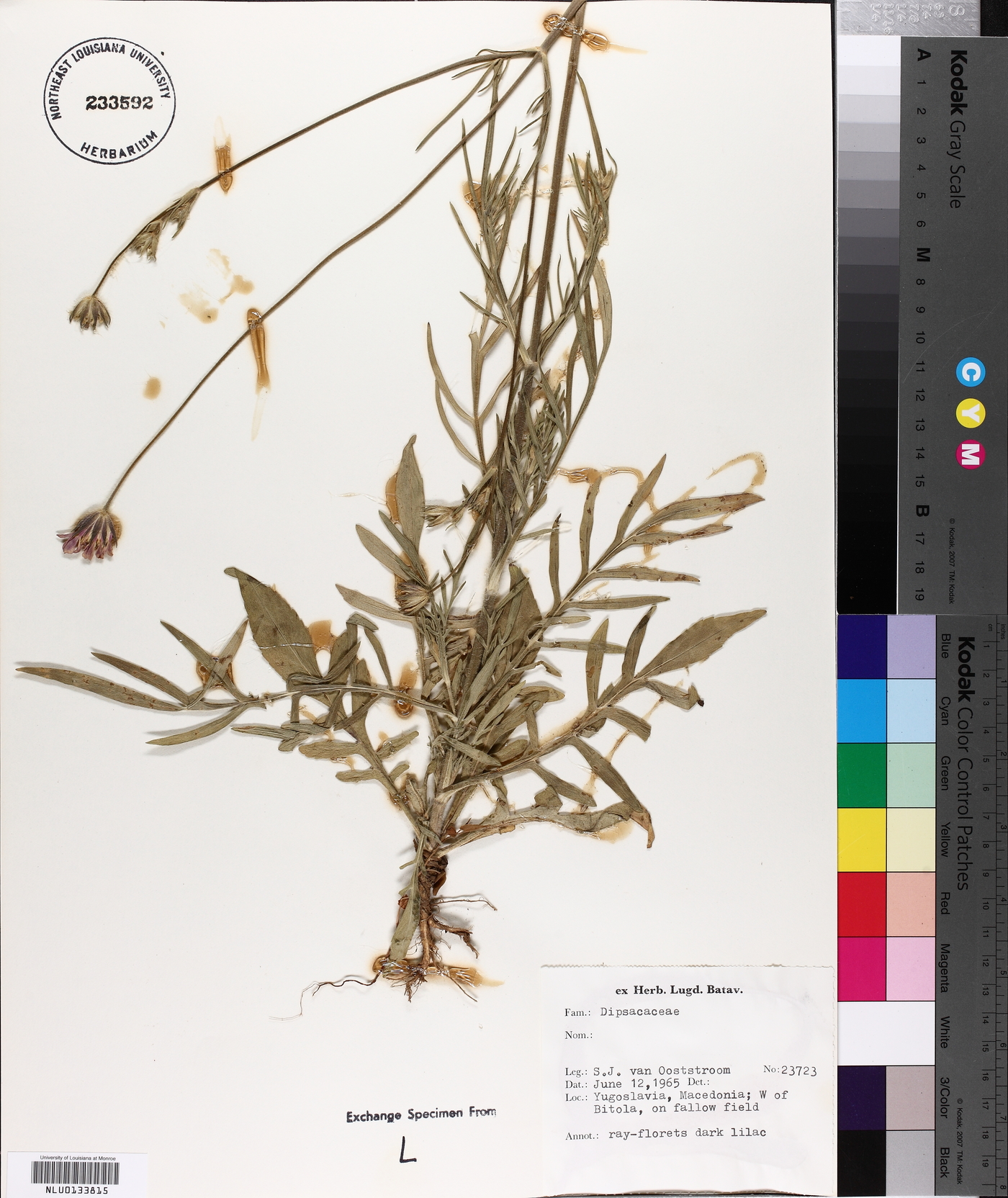Dipsacaceae
|
Dipsacaceae |
|
|
PLANT: Herbs or rarely shrubs, glabrous or often with multicellular, clavate, or glandular hairs, singular or in small tufts. LEAVES: opposite or sometimes whorled, estipulate, simple and entire or toothed to pinnatifid or pinnately dissected, sometimes with spiny margins. INFLORESCENCE: a dense, cymose, involucrate head with a bracteate, hairy, or naked receptacle, or in axillary verticillasters. FLOWERS: perfect, each usually subtended by a cup-like, subentire or apically toothed involucel; calyx small, cup-like, entire or 4-5-lobed or with 10 teeth or pappus-like bristles, rarely lacking; corolla sympetaious, somewhat irregular, 4-5-lobed or 2-lipped; stamens (2-)4, epipetalous, alternate with the lobes exserted, separate; pistil with 2 carpels, but I obsolete; ovary inferior, unilocular; style terminal, slender; stigma entire or 2-lobed; ovule solitary. FRUIT: an achene, nearly enclosed by the involucel; calyx commonly persistent. NOTES: 10 genera and about 270 spp., native of Africa and Eurasia. REFERENCES: Laferriere, Joseph E. Dipsacaceae. 1994. J. Ariz. - Nev. Acad. Sci. Volume 27, 201-202. |
|
